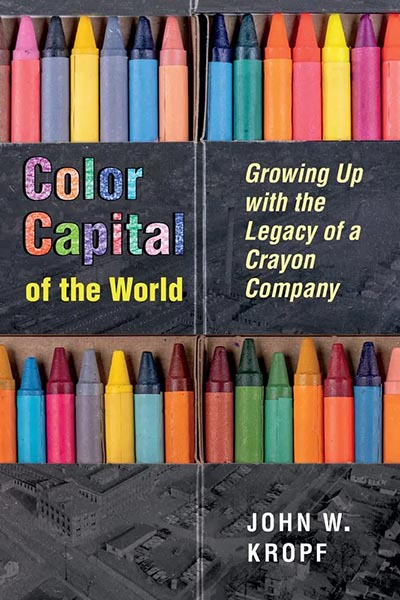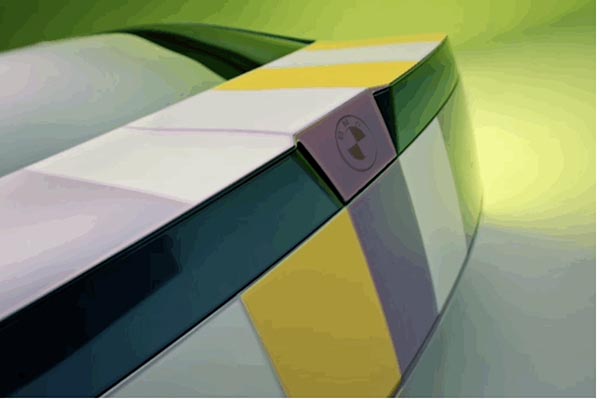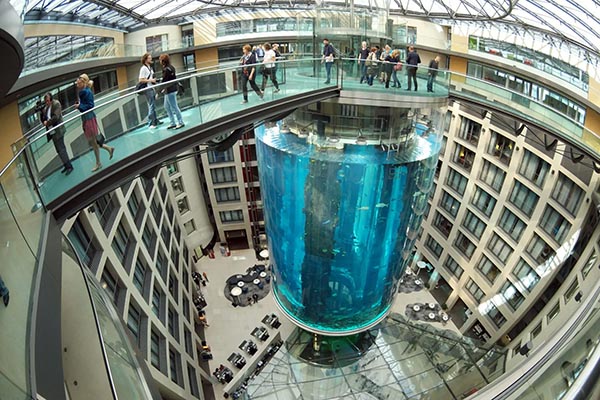Overlooked and Overhyped
So what were the most overhyped—or overlooked—marketing trends of 2022? Marketing Brew offers a round up. Top on the overhyped list (big surprise): the metaverse. (“Companies still struggle with getting their employees to master Teams, Zoom and Slack. The metaverse is going to be a long way off.”) On the overlooked list: welly, welly welly:
marketers do seem excited about something that’s a little less technological: direct mail. About one-quarter of respondents chose direct mail’s comeback as this year’s most overlooked marketing trend, handing it the most votes. Only 2% described it as overhyped.
Their survey respondents had mixed feelings about what sounds to us like the most horrifying social media platform ever: BeReal.
Marketers also seem torn on the value of BeReal; while 10% said that brands on BeReal was 2022’s most overhyped trend, another 10% also agreed that it was the most overlooked.
“I think BeReal is the next big social platform and if brands can make it work this early on, then that is huge since it doesn’t have traditional features for advertising,” one respondent said, while another said they “don’t see realistic growth happening because of BeReal. It seems people join because they want to escape consumerism, not have more of it.”
Yeah, well, that’s what’s they said about the Internet itself in 1994 and look how that turned out.
Waxing Eloquent About Crayons
One of the staples of any childhood—and even many adulthoods—is crayons. Technologies are always changing but if there is one constant in the world, it is the crayon. And yet the crayon as we know it was a fairly recent invention. Over at Print magazine, an interview with John Kropf, who has recently published a history of the crayon called Color Capital of the World: Growing Up With the Legacy of a Crayon Company.
How did the crayon become such a ubiquitous drawing/writing tool?
Two elements combined in the early 1900s. The American Crayon Company and its rival, Binney & Smith, working independently, figured out a method to combine paraffin wax with safe pigments to create a usable crayon. The inexpensive and practical crayons came along at a time when there was a new emphasis on art and creativity starting in American schools. The crayon came along at the right time and place.
… Binney & Smith successfully launched Crayola through a coloring contest. American Crayon responded by launching an educational department in 1912 that initiated a Crayograph contest across public schools throughout the country. The company enlisted members of the Manual Teachers’ Association. Among its employees was Florence Ellis, a former art teacher of the Cleveland Public Schools, who led the education work publishing books and materials for art students.
Interestingly, though, crayons were not originally invented with children in mind.
One of the first new crayon products to come out of the American Crayon factory in 1874 was known as 888, or railroad crayons. The black crayons became popular for railroad surveyors to mark critical points on the rails, and for freight conductors to mark train cargos. The 888 crayon was insoluble, whereas the ordinary chalk used at the time would be washed off by a rainstorm.

Around the Webb: Into the Dusty Attic
Do you like newspapers? Old-time radio shows? Dr. Joe Webb? If yes to all three, then good news! Radio Talking Books Service presents “The Dusty Attic,” a tribute to newspapers and newspaper reporters of the classic radio era. Dr. Joe Webb hosts this four-week exploration of the role of newspapers in society and their depiction in audio dramas. Episode 1 debuts Saturday, January 7, 11pm ET and is repeated at 10pm ET Sunday. Listen to the stream at https://rtbs.org or with the TuneIn radio service.
As you may recall, Dr. Joe is former director of WhatTheyThink’s Economics and Research Center who retired several years ago and has been immersing himself in old-time radio programs.
Here’s the rundown for this weekend’s edition:
The Big Story - Audition show 1946-02-05 Feature Assignment (never aired) - the original plans for the series were a bit different than when The Big Story came to the air in 1947; this is the famous story about a young man sent to prison, framed for a murder to cover up police corruption during Prohibition; he was freed many years later after his mother, who cleaned offices overnight for many years so she could offer her life savings as a cash reward to someone, anyone, who would finally step forward with the truth.
Screen Director’s Playhouse 1949-12-09 Call Northside 777 starring Jimmy Stewart - Hollywood offers a superb treatment of the very same news story, with Jimmy Stewart's top-notch radio acting skills and a big-budget production.
Check it out!
Graphene’s View to a Kill
Was it a good week for graphene news? It’s always a good week for graphene news! Could graphene replace silicon as the basis of all electronics? Could be! Says (who else?) Graphene-Info:
Walter de Heer, Regents’ Professor in the School of Physics at the Georgia Institute of Technology, and his collaborators, have developed a new nanoelectronics platform based on graphene. The technology is compatible with conventional microelectronics manufacturing, a necessity for any viable alternative to silicon. In the course of their research, the team may have also discovered a new quasiparticle. Their discovery could lead to manufacturing smaller, faster, more efficient, and more sustainable computer chips, and has potential implications for quantum and high-performance computing.
“Graphene’s power lies in its flat, two-dimensional structure that is held together by the strongest chemical bonds known,” de Heer said. “It was clear from the beginning that graphene can be miniaturized to a far greater extent than silicon -- enabling much smaller devices, while operating at higher speeds and producing much less heat. This means that, in principle, more devices can be packed on a single chip of graphene than with silicon.”
This won’t happen tomorrow; they believe it will likely be another five to 10 years before the first graphene-based electronics appear. “But thanks to the team’s new epitaxial graphene platform, technology is closer than ever to crowning graphene as a successor to silicon.”
Smart Elevators On the Rise
Oh, this is just asking for trouble. Says Axios:
The latest breed of elevators can recognize your face, greet you by name and take you to your floor automatically.
Do elevators have breeds? Are people now breeding elevators?
Why it matters: The widespread fear of elevators that hit during the pandemic served to turbo-charge new innovations.
New features make the ride safer, faster and more convenient, but come with a big price tag for building owners.
For developers who want to spend the cash, the sky’s the limit: AI and facial recognition can push customized entertainment and advertisements on elevator screens to passengers who opt in.
Elevators that travel horizontally may be on the horizon, paving the way for new architectural innovations.
If you’ve ever stayed at the pyramidal Luxor hotel in Vegas, you have experienced elevators that travel diagonally, which can be quite disorienting.
The big four [elevator manufacturers] are planning for cloud-connected elevators becoming an integral part of smart cities and smart buildings — coordinated with local transit schedules and, of course, rooftop air taxis.
What could possibly go wrong?
Part of the sales pitch is that smart elevators can turn a mundane ride into a seamless experience — or even immersive entertainment.
We really just want to get to the lobby.
“Now the lights in the cabin can become blue because we know it’s your favorite color. Your favorite music can come on,” says Jon Clarine, head of digital services at TK Elevator North America.
Oh, come on, it’s a three-minute elevator ride. We can certainly put up with Kenny G for that long. And let’s not even get into all the privacy issues this opens up. And, actually, we prefer to take the stairs anyway.
AI-Yi-Yi, Part the Infinity: For the Birds
Sometimes it seems like we’re living in The Onion’s vision of the future. Again from Axios, your source for dystopian news:
At a preview of the Consumer Electronics Show in Vegas, which formally kicks off tomorrow, Bird Buddy showed off a smart bird feeder that takes snapshots of feathered friends as they fly in for treats.
The startup says its AI can recognize 1,000+ species, allowing users to share photos through an app, AP reports.
“We try to kind of gamify the collection so it’s ... like a real-life Pokémon Go — with real animals and wildlife in your backyard,” said Kyle Buzzard, a Bird Buddy co-founder.
The co-founder of Bird Buddy is named Kyle Buzzard? They should get Ethan Hawk as a spokesperson.
The company, which began as a Kickstarter project in 2020, started shipping bird feeders in September and has sold all 100,000 in its inventory. The basic feeder is $199.
So…facial recognition for birds? How do they feel about it?
Any Color You Like, Part 2
Just about a year ago, we linked to a story about BMW’s iX Flow, which used E Ink panels to allow the car to change color from white, to black, to gray. At this year’s Consumer Electronics Show (CES), taking place this week, they have gone further. Says The Verge:
the i Vision Dee — which looks like a kind of cross between a vintage BMW and a Tesla — can change colors on command. Instead of just black, white, and gray, 32 colors are now available. Not only that but the i Vision Dee is made up of 240 E Ink e-paper segments, all of which can be controlled individually. This means the i Vision Dee can shift to one solid color or put on one hell of a light show.
… this concept uses the latest tech from E Ink, called Prism 3 film, which is fully programmable and meant to be low on power consumption for sustainability. Prism 3 can also be manufactured in any shape, making industrial design applications seemingly endless.

This could be an interesting alternative to vehicle wrapping—it was really only a matter of time before some kind of electronic display came to vehicle graphics. Still, it’s a ways away from commercialization:
For now, it’s an in-house R&D project — but one that has attracted a lot of attention both inside the automaker and in the wider world. SlashGear notesthat the brains behind the project, Australian engineer Stella Clarke and her team, have been working to develop and refine the e-paper since last year’s CES.
Right now, they’re working on making the e-paper panels tougher and able to stand up to things like flying insects and car washes. As it stands now, de rigueur road damage renders panels nonfunctional, as is the case on the black-and-white iX Flow. The team’s ultimate goal is to make a spray that can be applied to body panels more easily, but that’s a ways off. The costs are also unclear, although Clarke intimated they could be lower than you might think.
ElastaTrode
Sure, we poke fun a lot of these wacky new technologies, but in some cases, technology breakthroughs have the potential to change people’s lives for the truly better. Take Conductive Technologies, which makes smart textiles for medical applications. Essentially, they print electronics on textile substrates. From their ElastaTrode case study:
Atlantic Therapeutics began product development of Innovo in 2017. Innovo is a smart garment that is used to treat urinary incontinence and uses Conductive Transfers’ ElastaTrode printed circuit technology. Printed electrodes deliver electrical muscle stimulation to the pelvic floor muscles which treat the condition.
Following successful trials and regulatory approval from the FDA, Atlantic Therapeutics signed a manufacturing and supply agreement with Conductive Transfer (see press release). Since 2018 Conductive Transfers has manufactured and supplied over 85,000 ElastaTrode circuits for Innovo. In 2021 Atlantic Therapeutics licensed Conductive Transfers’ patents and technology to support its growth plans.
The company has a variety of other “Elasta” technologies for smart textile applications that can be used in a variety of therapeutic medical applications.
Making Book
Here’s an interesting craft project via Queen City Minis in which a craft store book box (one of those empty boxes that look like they are actual books) is converted into a diorama of an abandoned laboratory.
Now You’re Cookin’
You gotta love it when a product’s technological breakthrough is a glass window. From Gizmodo:
Unlike conventional electric ovens that rely on metal heating elements that can take a lot of time and energy to preheat an oven to a specific temperature, the Brava [smart countertop oven]’s big innovation was its use of six lamps inside that cooked food using a combination of visible and non-visible light. Its creators claimed the interior of the Brava smart oven could be heated to 500 degrees Fahrenheit in less than a second, and cooking an entire meal used less energy than would be needed to preheat a conventional oven.
Sounds cool…or…not. Anyway:
One of the many features of the $995 Brava smart countertop oven we really liked when we reviewed it back in 2018 was a 5MP camera that live-streamed the food inside as it cooked.
Soon to be a Netflix series. If something cooks as fast as this oven is supposed to, it is a wise idea to go wandering off to the extent that you would need to check a livestream to see what’s happening with it? Even worse though:
that camera was the only way to actually see inside the oven to ensure food wasn’t being overcooked or burned.
Good grief. Well, it’s good to see that this bug feature has been corrected:
The new Brava Glass’s solution is to borrow a feature you’ll find on even a $20 toaster oven: a door with a glass window featuring a 97% tint that keeps the heat trapped inside while allowing users to see their food cooking without having to reach for their phones.

What’s most surprising about the Brava Glass is the price. When we reviewed the original Brava smart oven, it sold for $995, but is now available on Brava’s website for $1,295 as part of a “Starter Set” that includes pans and temperature sensors, or a larger “Chef’s Choice” set for $1,695. The new Brava Glass, which will ship in early 2023, is only available as part of a $1,995 “Chef’s Choice” set that includes “two glass trays, two metal trays, a muffin tin, square pan, loaf pan, egg tray and the cast iron chef’s pan.” As with hotel rooms, airplanes, and houses, you’ll be paying a premium here for a view.
And as with hotel rooms, airplanes, and houses, no, we won’t.
A Real Robot Detector
On many an occasion, we have emailed, texted, Slacked, or whatevered something potentially humorous, and have received the reply “LOL.” But did they really laugh out loud? Well, for those of us who are massively insecure, we can now find out. Via Laughing Squid, Brian Moore has created a “LOL Verifier,” a device that will only let a user type LOL when they are actually laughing out loud. It is a small box that is programmed to recognize different types of laughs.

If the user actually does chuckle, chortle, or laugh uproariously, the Verifier will allow them to type LOL. If not, they’ll be required to type a substitute.
Check out this video via Instagram.
So Long, And Tanks for All the Fish
If you were staying at the Radisson Hotel in Berlin’s Alexanderplatz last month, there is the very real possibility that you would have been assaulted by live fish. A feature of the hotel, wrapped around the central elevator, is a 50-foot tank called the AquaDom which houses nearly 1,500 tropical fish. It’s the largest tank of its kind in the world. Well, it was. At 5:45 a.m. on December 16, it somehow burst, sending 264,000 gallons of water—and all the poor fish—rushing through the lobby. Said the New York Times:
Even hours after the AquaDom burst, an entire block of the street outside the building remained soaked by 264,000 gallons of water that rushed out of the lobby, uprooting plants and ripping out telephones that lay strewn among hundreds of chocolate balls from a neighboring Lindt chocolate shop, also battered by the force of a wave of water that local media estimated would have weighed about 100 tons.
The impact of the water erupting onto the street was so powerful that local seismographs picked up on it. Several shops nearby were damaged — with chairs upturned and windows shattered.

Foul play was not expected (“the fish sleep with the fishes”?), and if it had happened later in the day, it could have been a lot worse.
“It’s a tragedy for the fish,” said Markus Kamrad, an official at the Berlin Senate responsible for animal protection. “We were lucky that it happened at a time that only two people were slightly injured. But it’s unfortunate, of course, that so many fish died.”
There is no truth to the rumor that this is how UberEats delivers sushi.
Did anything catch your eye “around the Web” this week? Let us know at [email protected].
This Week in Printing, Publishing, and Media History
January 2
1818: The British Institution of Civil Engineers is founded by a group of six engineers; Thomas Telford would later become its first president.
1920: American science fiction writer Isaac Asimov born.
1929: American author and screenwriter Charles Beaumont born.
January 3
1749: The first issue of Berlingske, Denmark’s oldest continually operating newspaper, is published.
1870: Construction work begins on the Brooklyn Bridge in New York.
1892: English writer, poet, and philologist J.R.R. Tolkien born.
1926: English composer, conductor, and producer George Martin born.
1947: Proceedings of the U.S. Congress are televised for the first time.
1957: The Hamilton Watch Company introduces the first electric watch.
1977: Apple Computer is incorporated.
2000: Final daily edition of the Peanuts comic strip.
January 4
1643: English mathematician and physicist Isaac Newton born.
1809: French educator, inventor of Braille Louis Braille born.
1853: After having been kidnapped and sold into slavery in the American South, Solomon Northup regains his freedom; his memoir Twelve Years a Slave later becomes a national bestseller.
1958: Sputnik 1, the first artificial Earth satellite, launched by the Soviet Union in 1957, falls to Earth from orbit.
1960: French novelist, philosopher, and journalist, Nobel Prize laureate Albert Camus dies (b. 1913).
1965: American-English poet, playwright, and critic, Nobel Prize laureate T. S. Eliot dies (b. 1888).
January 5
1932: Italian novelist, literary critic, and philosopher Umberto Eco born.
1944: The Daily Mail becomes the first transoceanic newspaper.
1953: The play Waiting for Godot by Samuel Beckett is first performed.
January 6
1838: Alfred Vail demonstrates a telegraph system using dots and dashes (this is the forerunner of Morse code).
1852: French educator, inventor of Braille Louis Braille dies (b. 1809).
1878: American poet and historian Carl Sandburg born.
1912: German geophysicist Alfred Wegener first presents his theory of continental drift. (Afterward, everyone slowly moved away from him.)
1931: Thomas Edison signs his last patent application.
1931: American novelist, playwright, and short story writer E. L. Doctorow born.
1946: English singer-songwriter and guitarist Syd Barrett born.
2000: Kerplonk! American cartoonist Don Martin dies (b. 1931).
January 7
1706: German publisher Johann Heinrich Zedler born.
1831: German postman and founder of the Universal Postal Union Heinrich von Stephan born.
1873: Hungarian-American film producer and co-founder of Paramount Pictures Adolph Zukor born.
1894: William Kennedy Dickson receives a patent for motion picture film.
1912: American cartoonist Charles Addams born.
1927: The first transatlantic telephone service is established from New York City to London.
January 8
1547: The first Lithuanian-language book, Simple Words of Catechism, is published in Königsberg.
1642: Italian physicist, mathematician, astronomer, and philosopher Galileo Galilei dies (b. 1564).
1775: English printer and type designer John Baskerville dies (b. 1706).
1824: English novelist, playwright, and short story writer Wilkie Collins born.
1862: American publisher and founded of the Doubleday Publishing Company Frank Nelson Doubleday born.
1889: Herman Hollerith is issued US patent #395,791 for the “Art of Applying Statistics”—his punched card calculator.
1904: The Blackstone Library is dedicated, marking the beginning of the Chicago Public Library system.
1935: Elvis Presley born.
1941: English actor, screenwriter, and Monty Python member Graham Chapman born.
1942: English physicist and author Stephen Hawking born.
1947: English singer-songwriter, producer, and actor David Bowie born.










Discussion
Join the discussion Sign In or Become a Member, doing so is simple and free